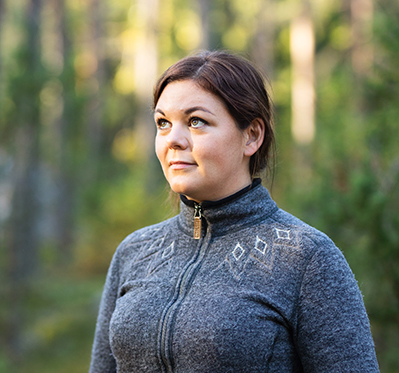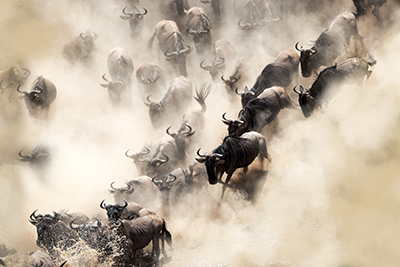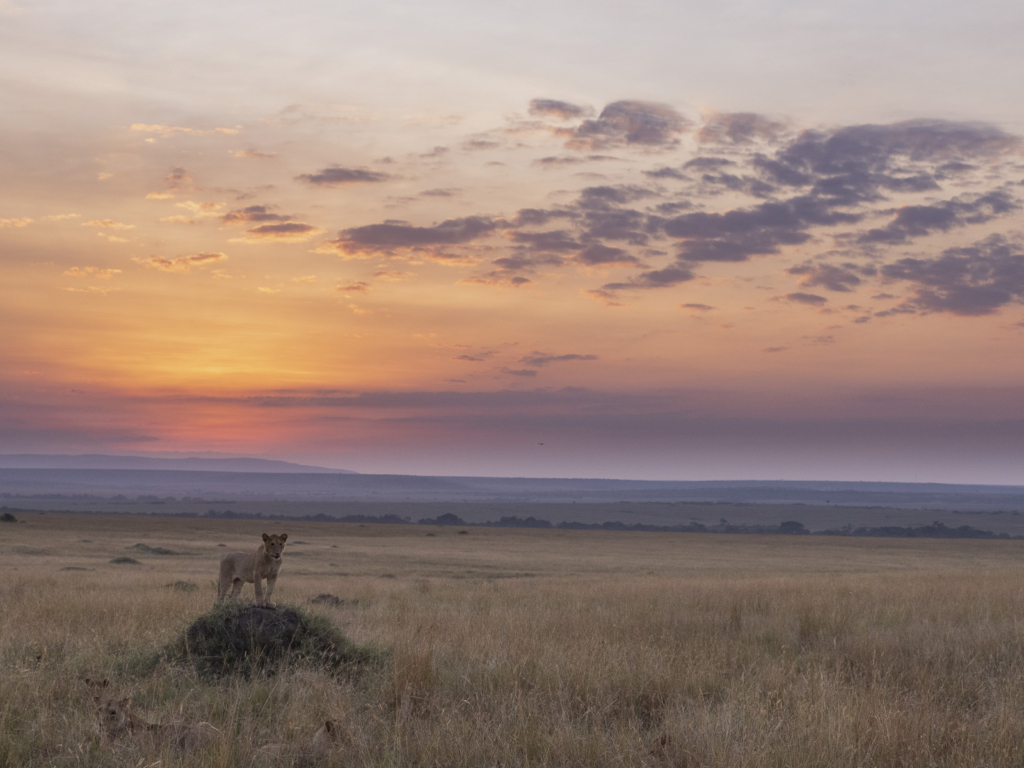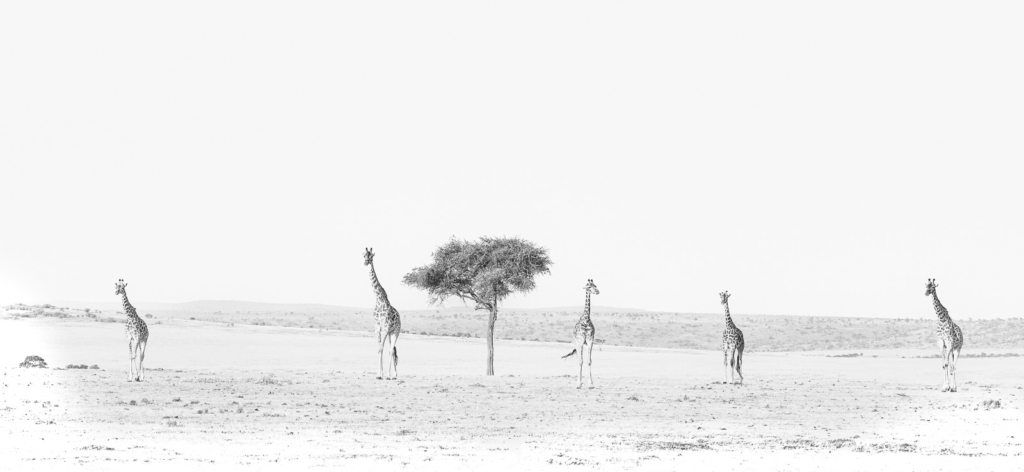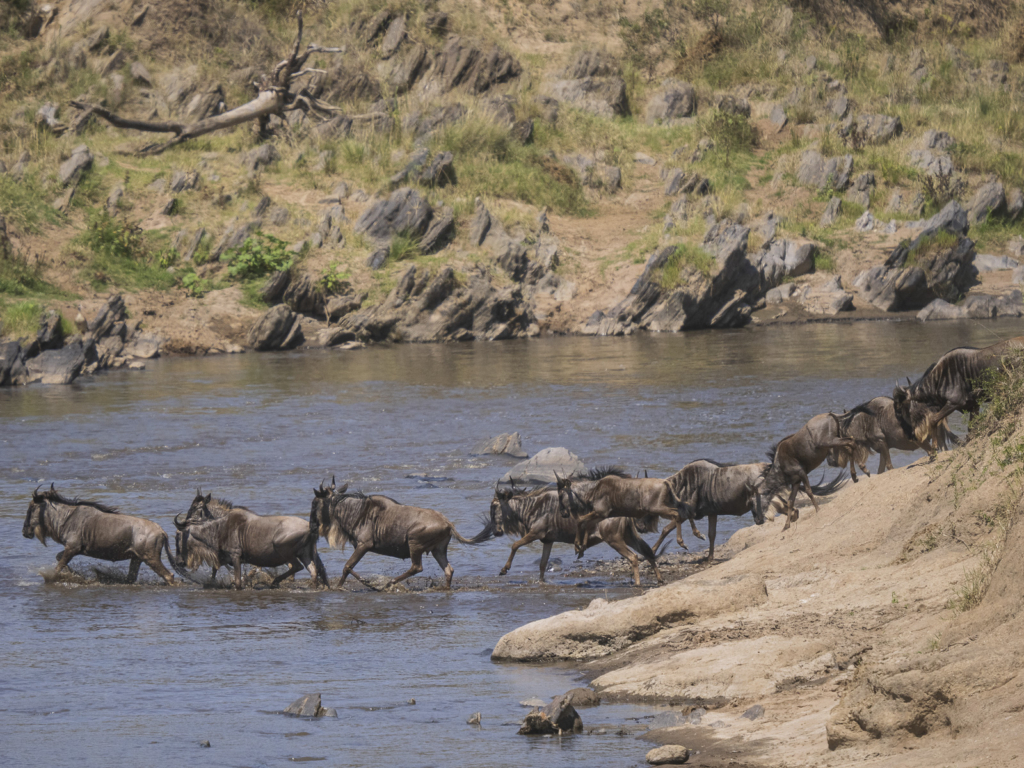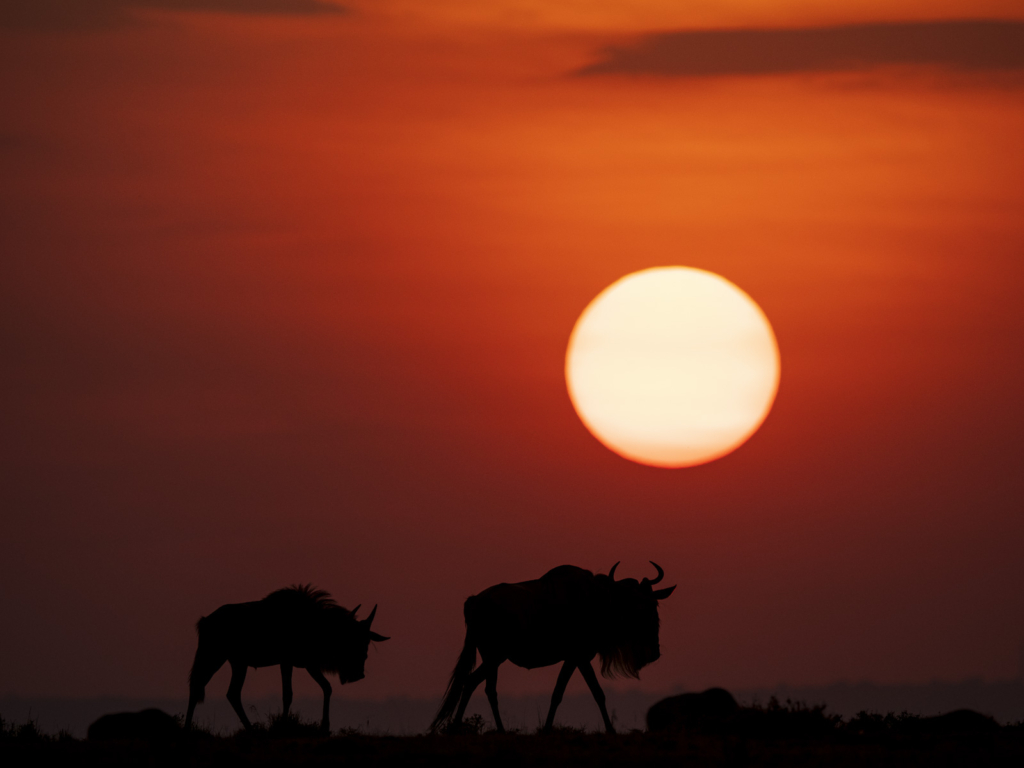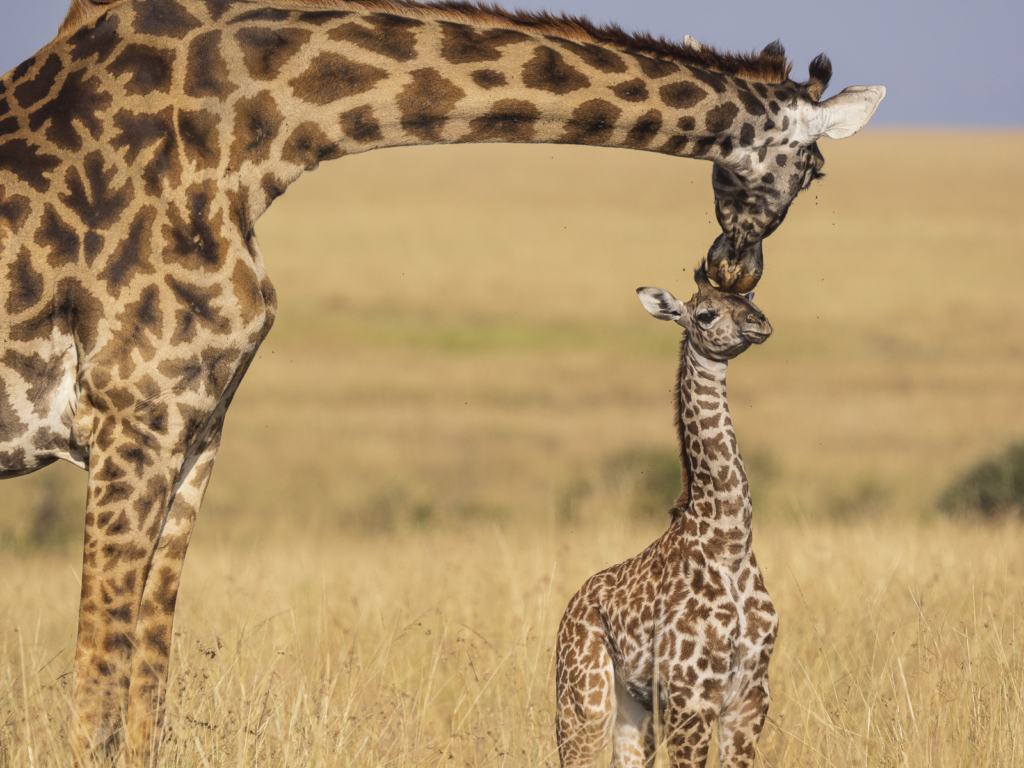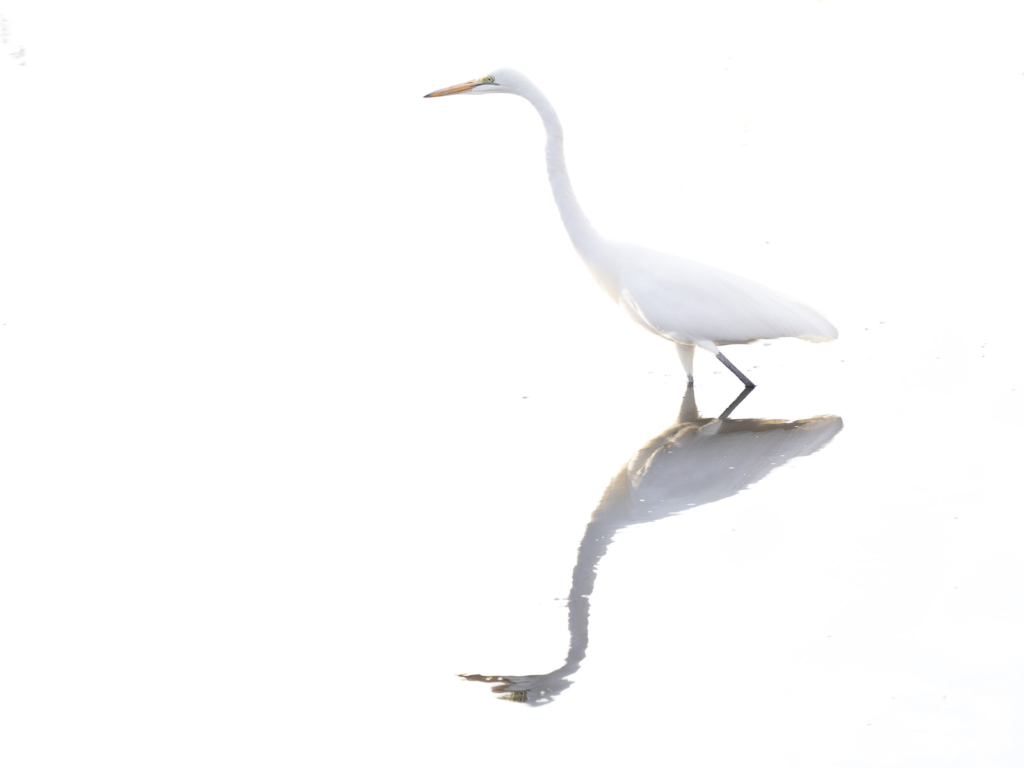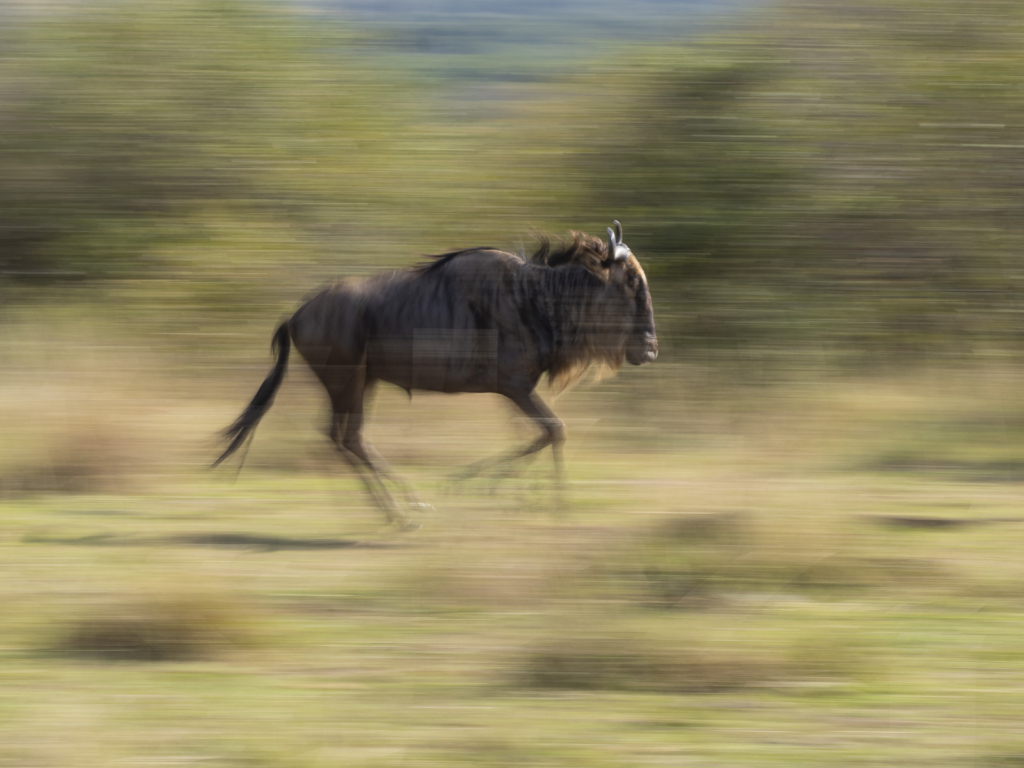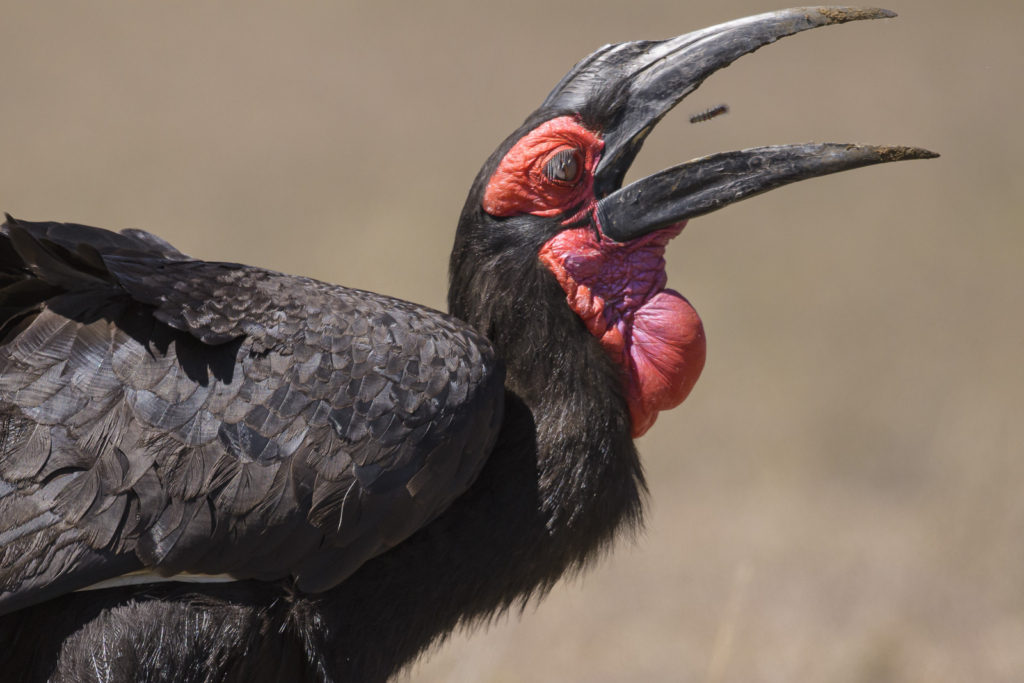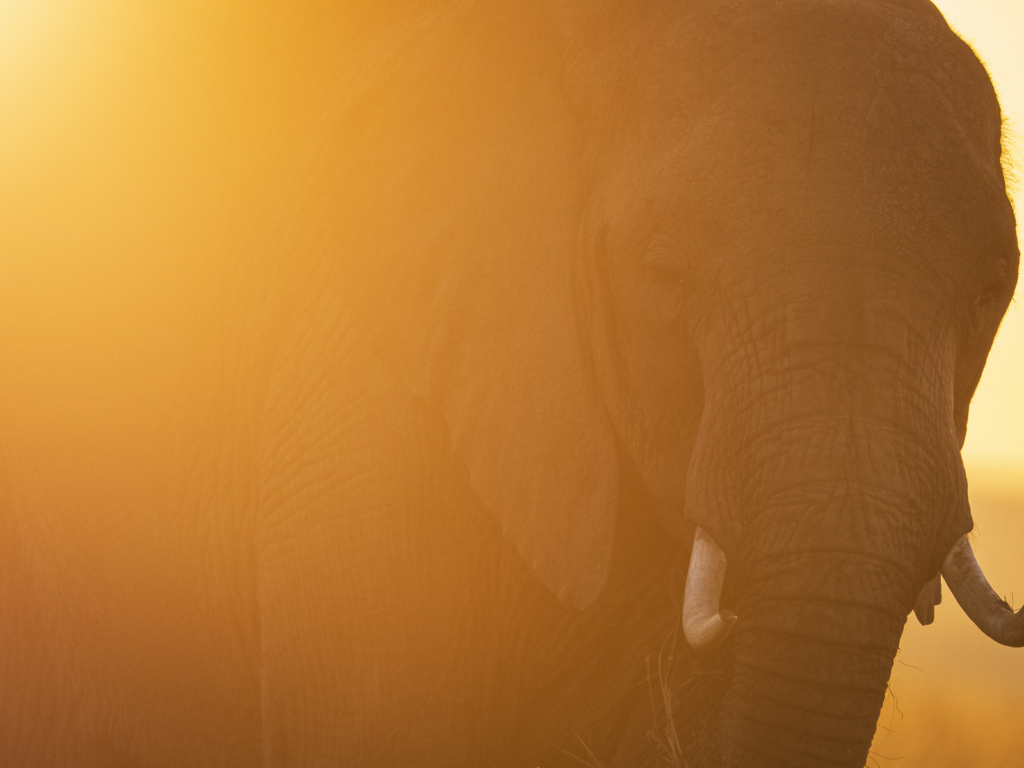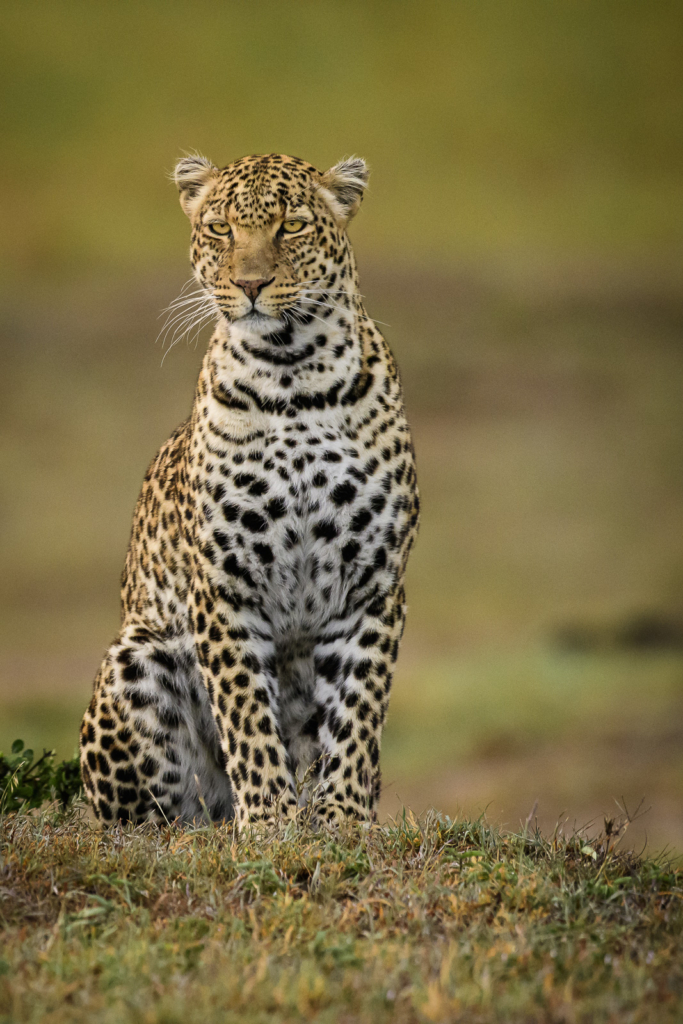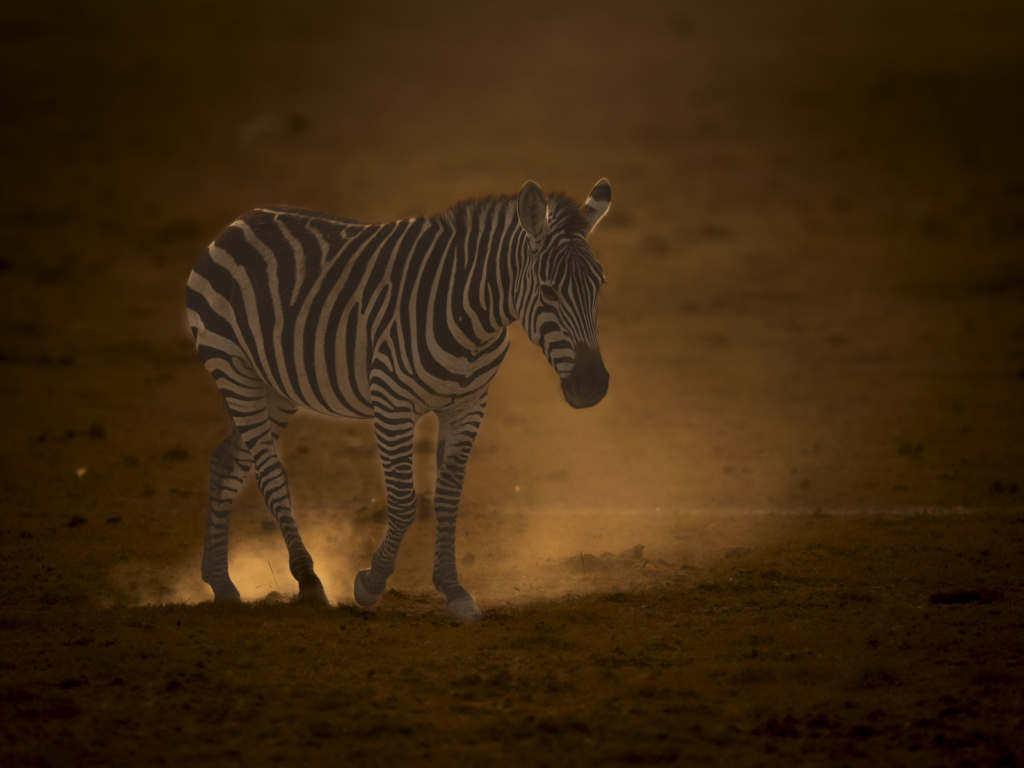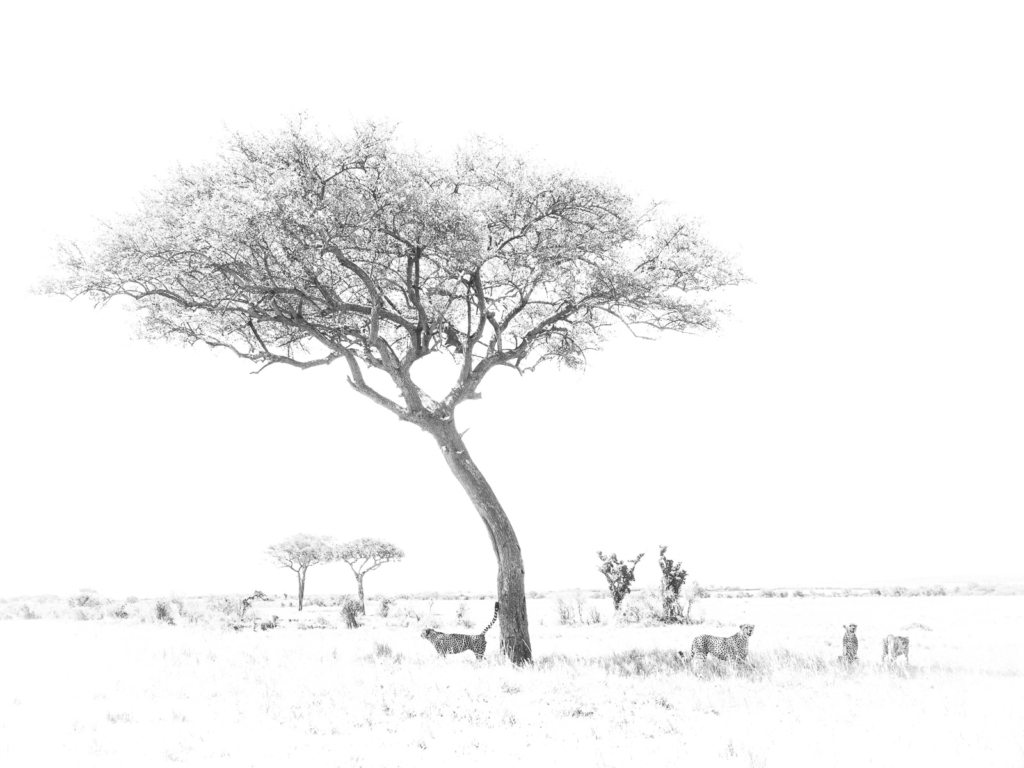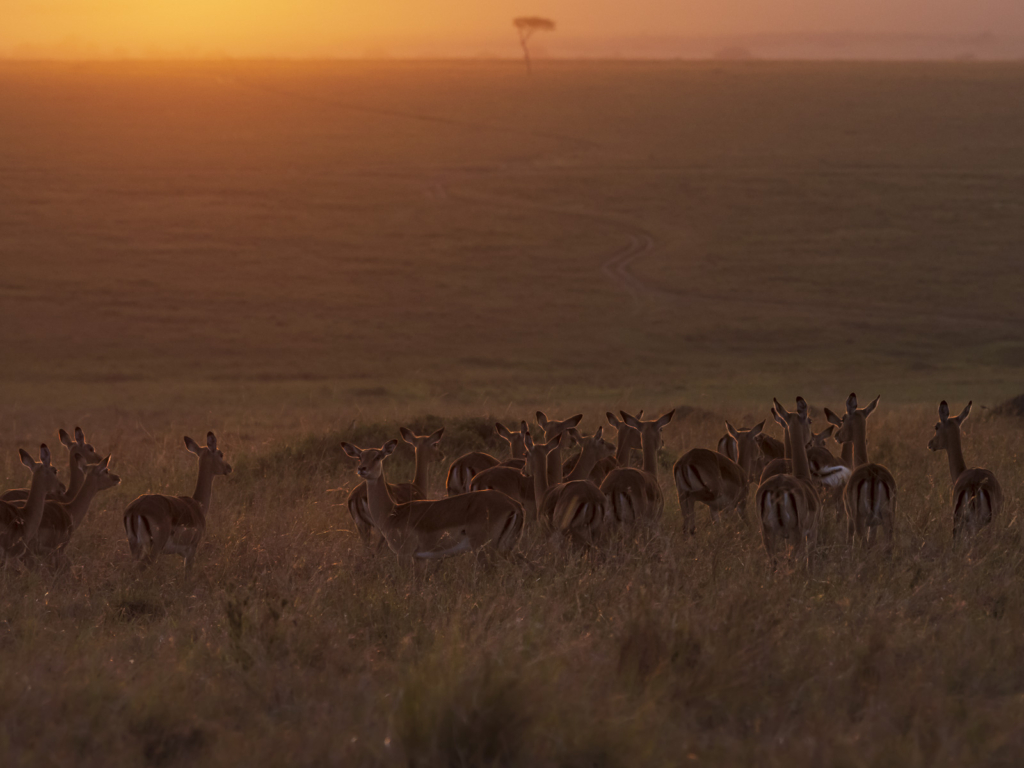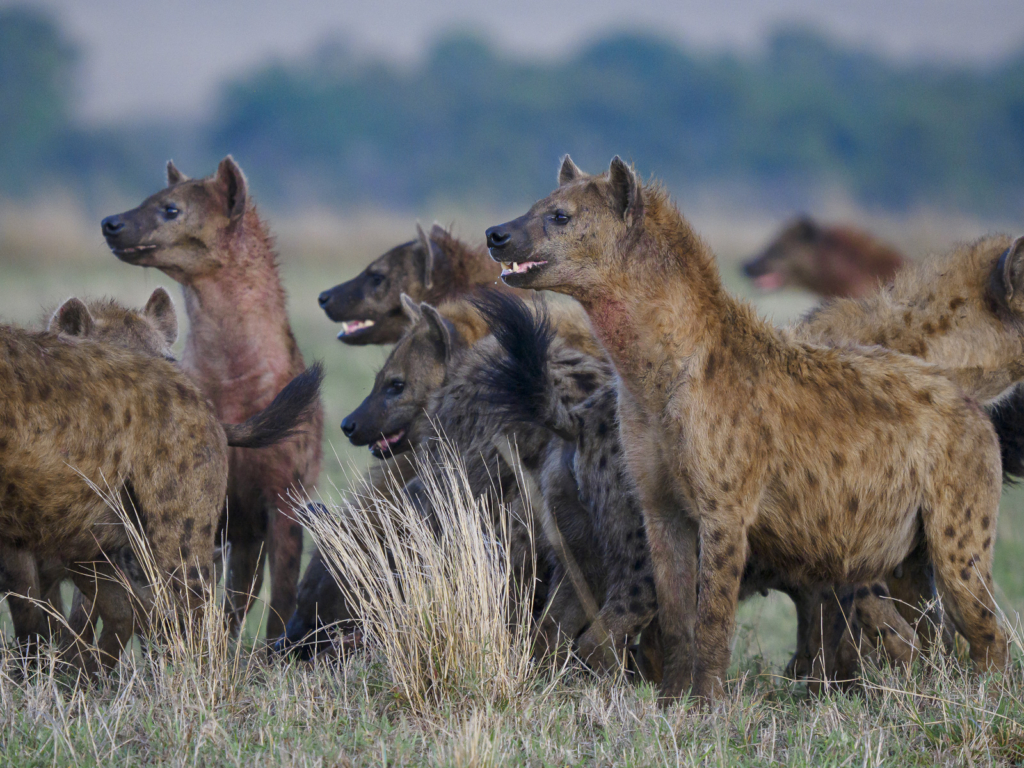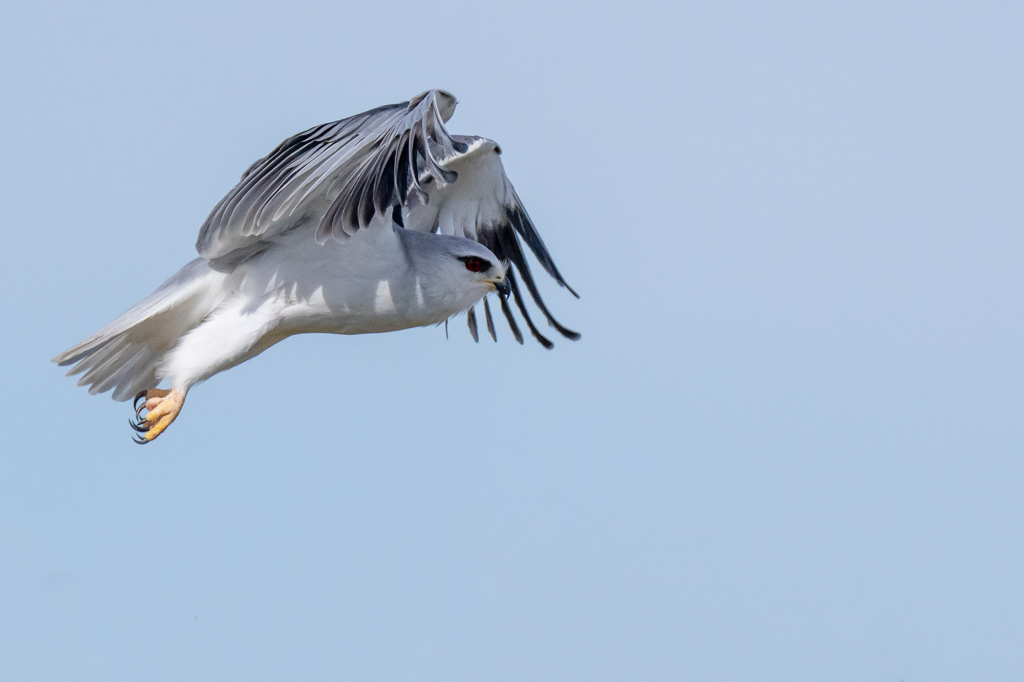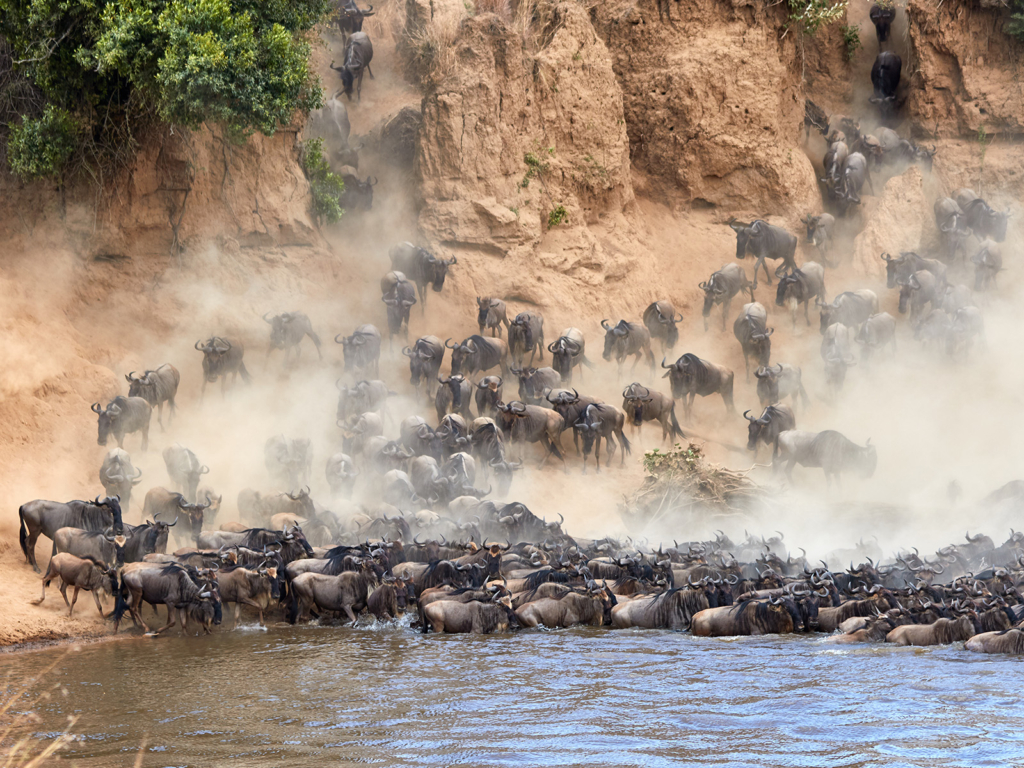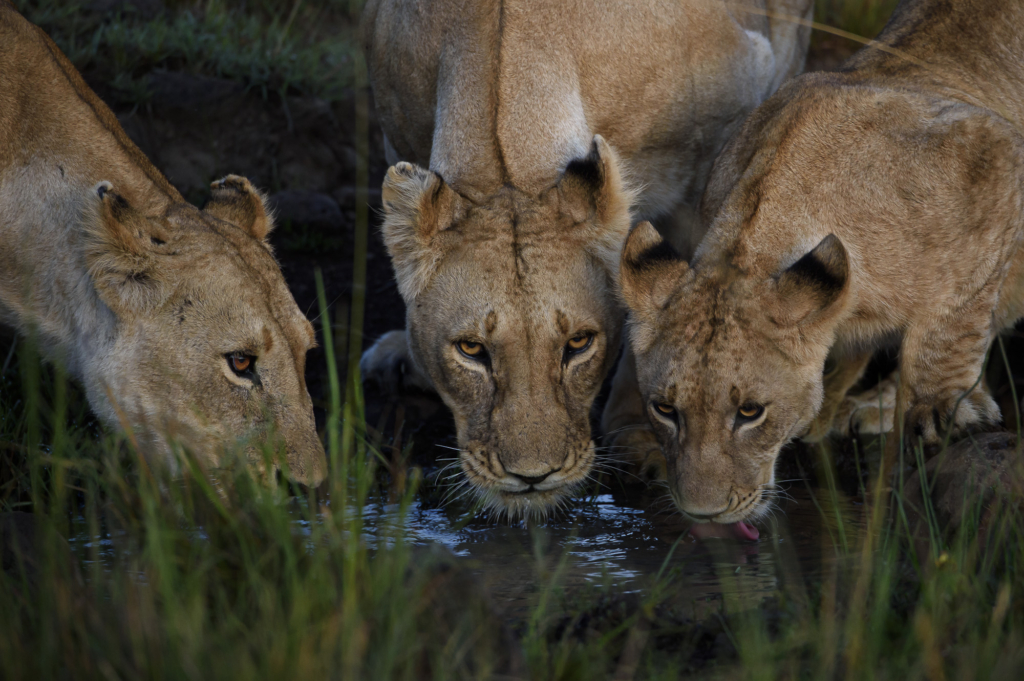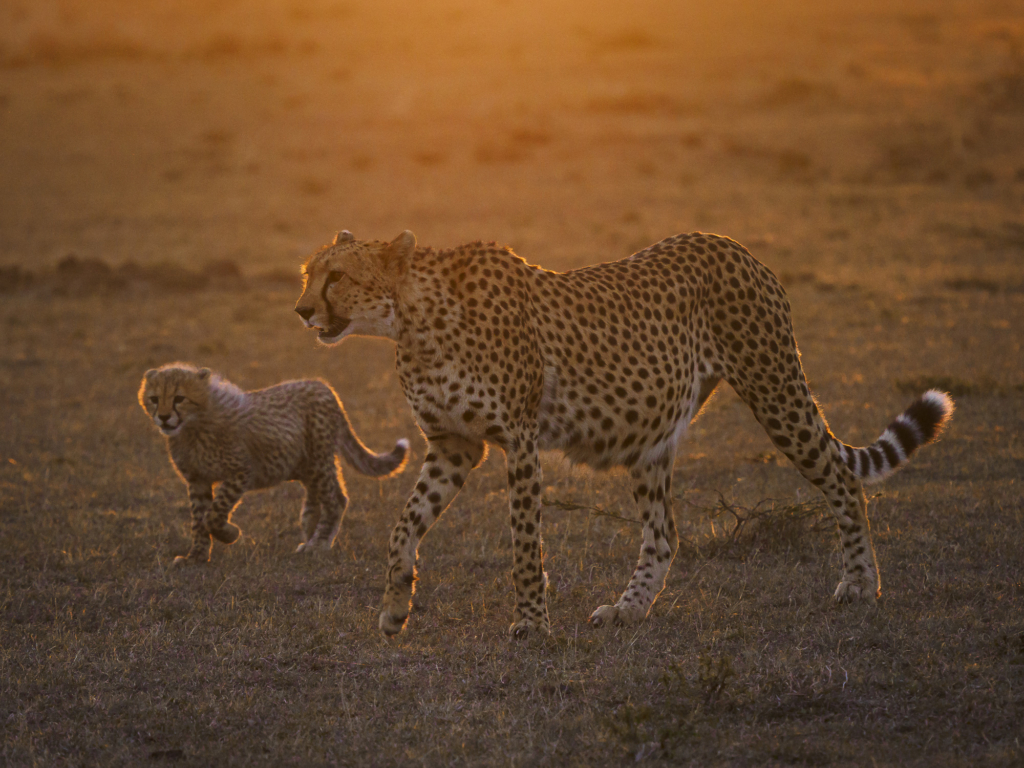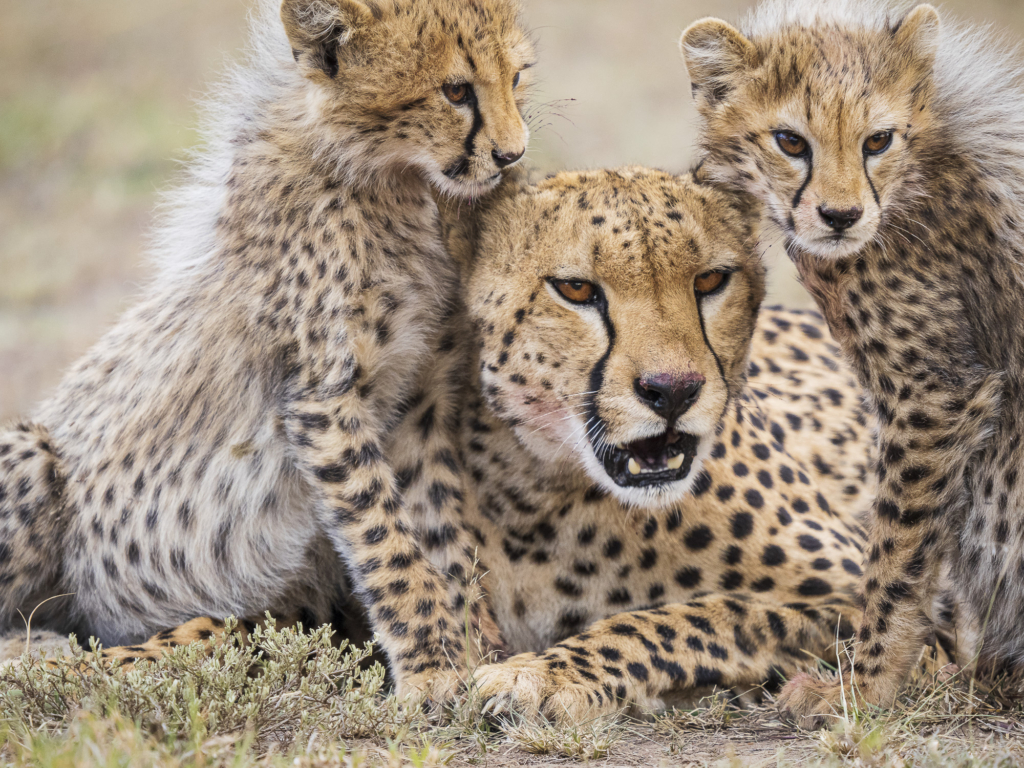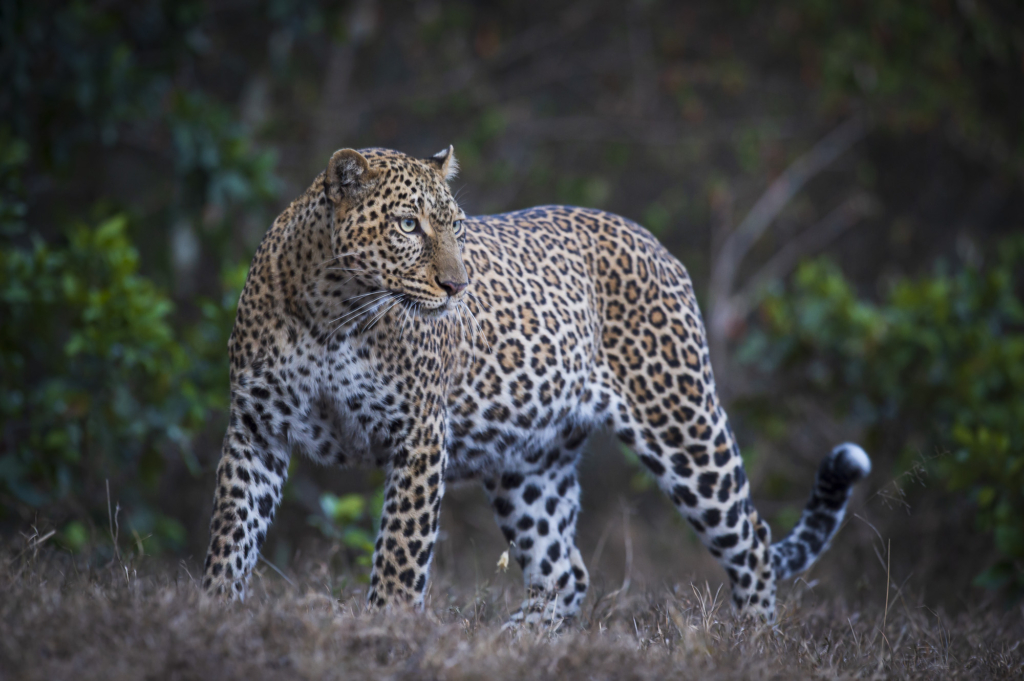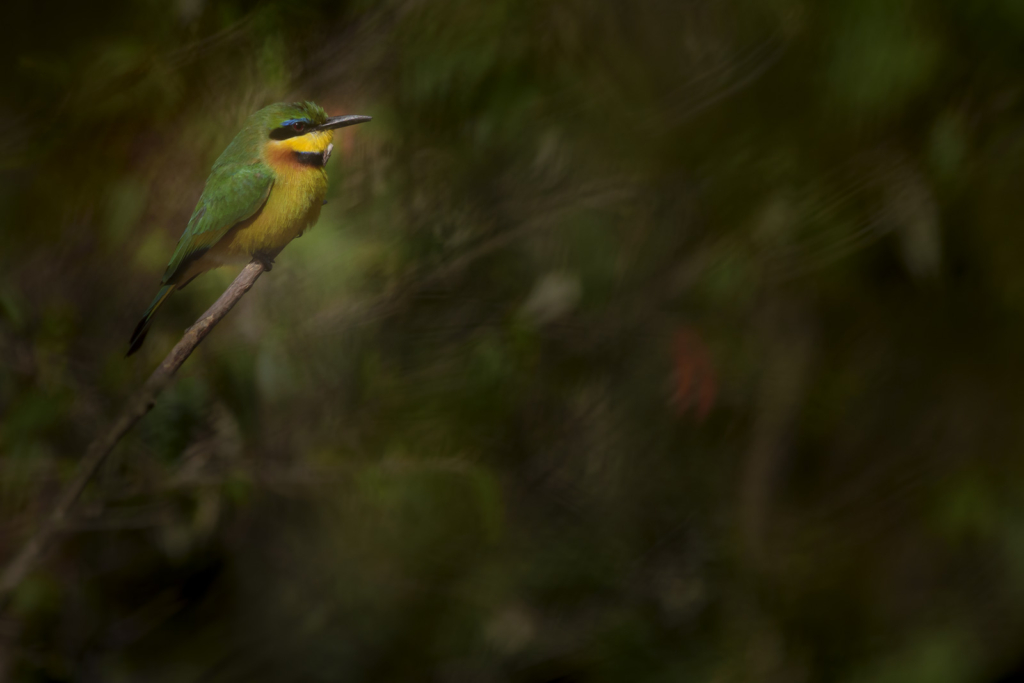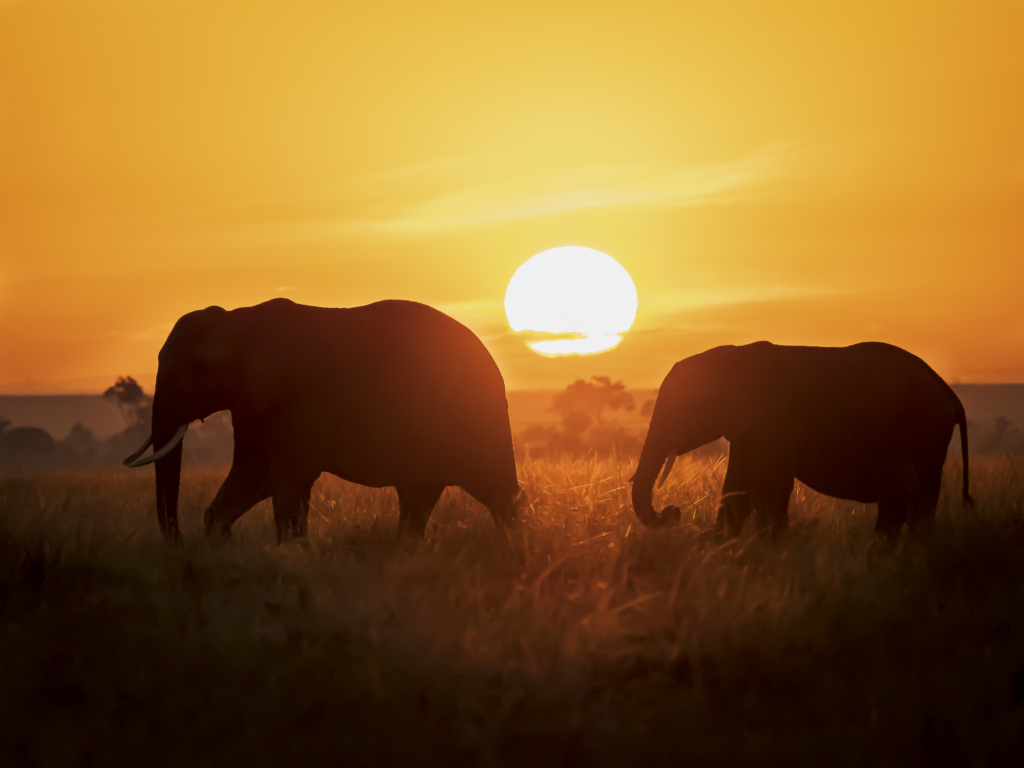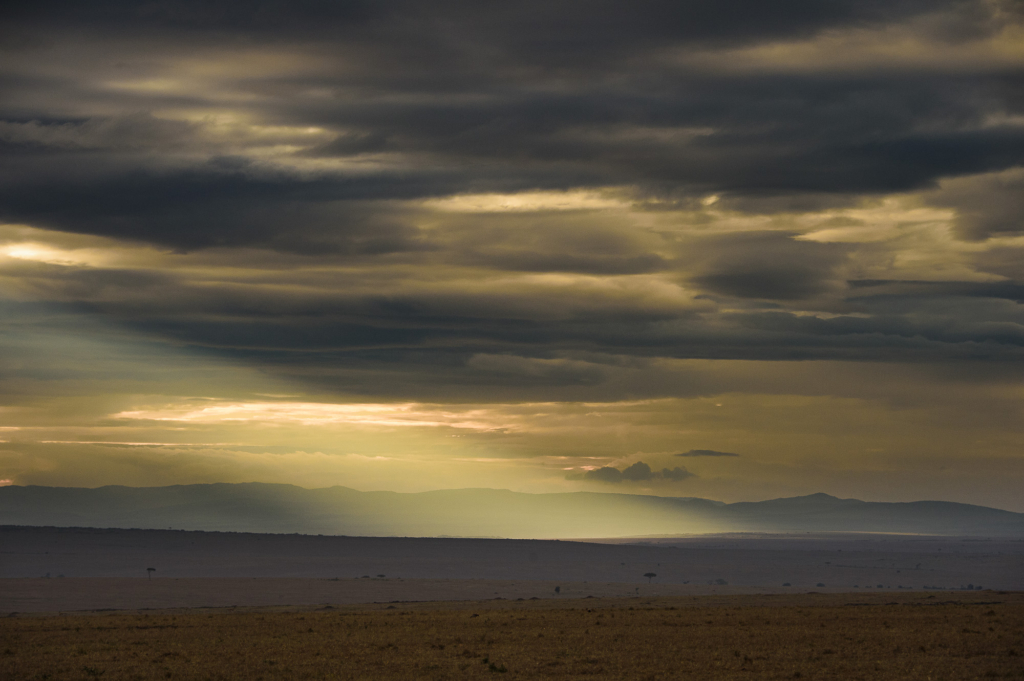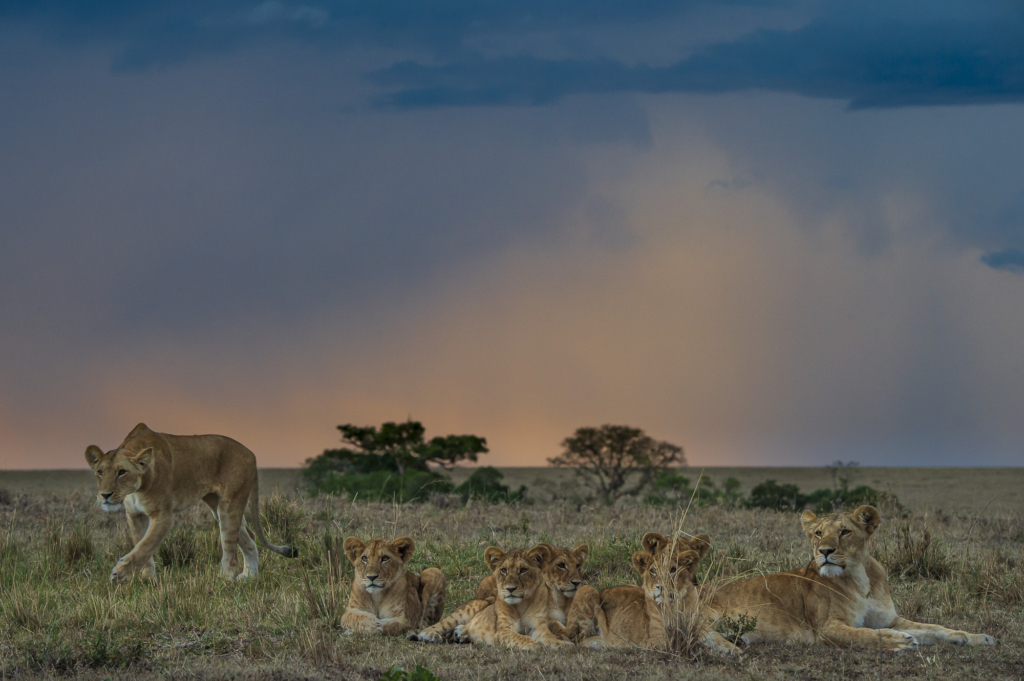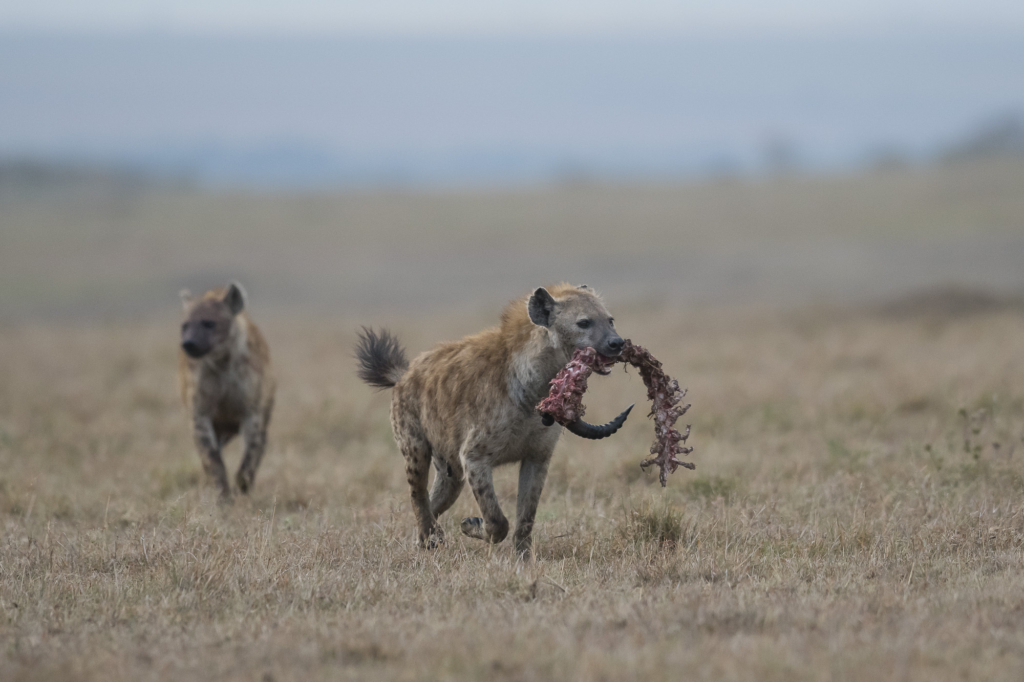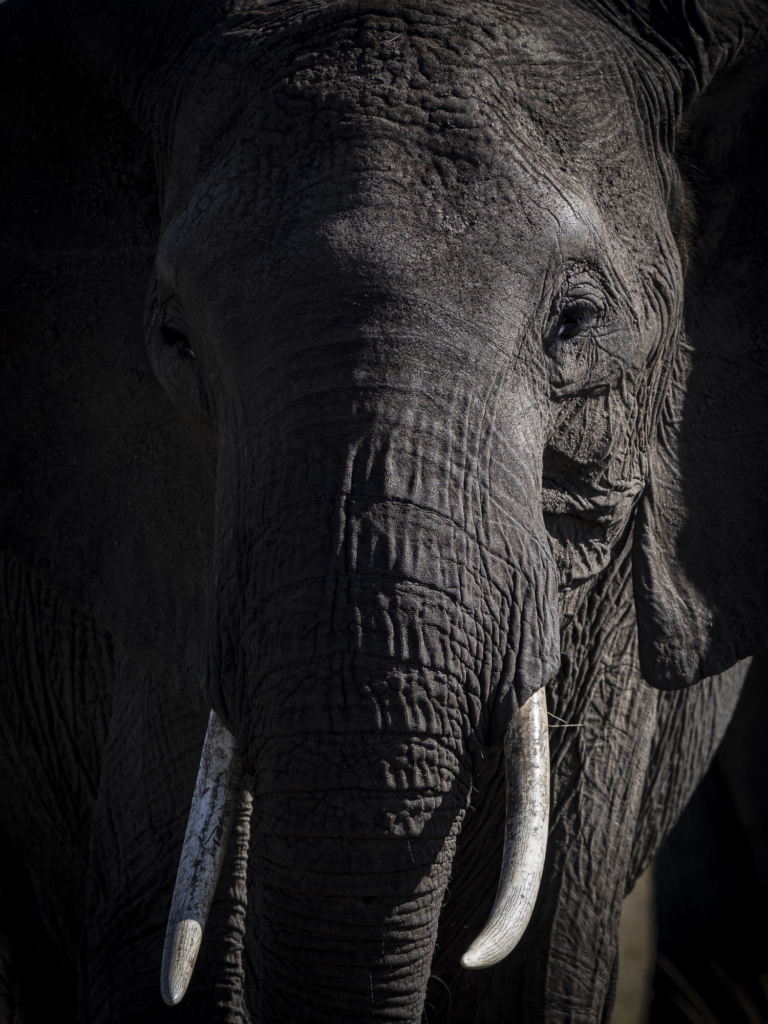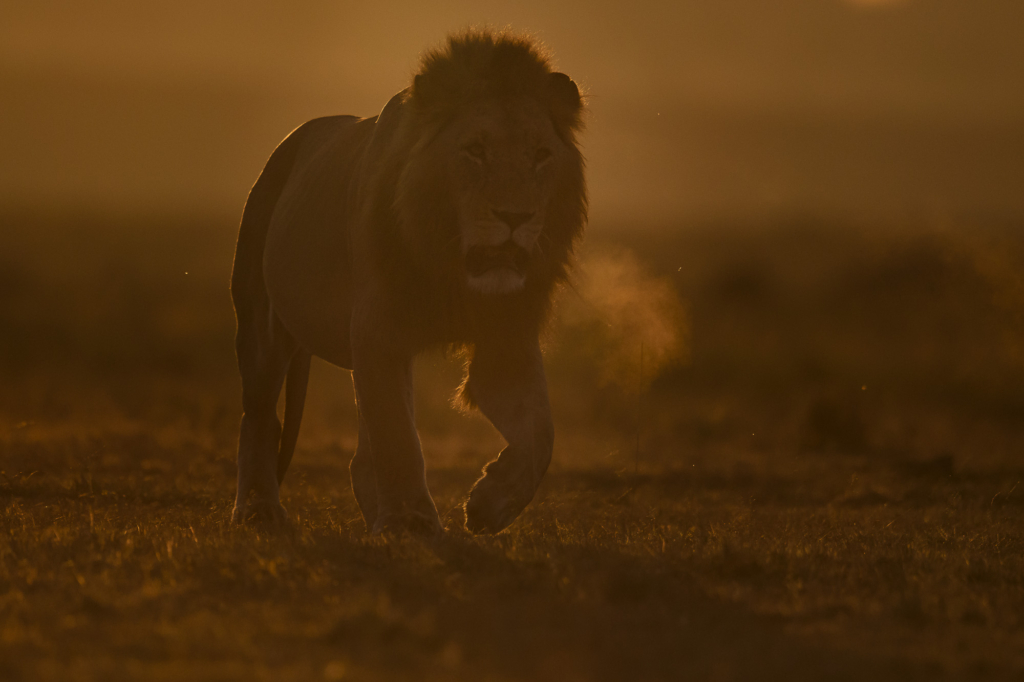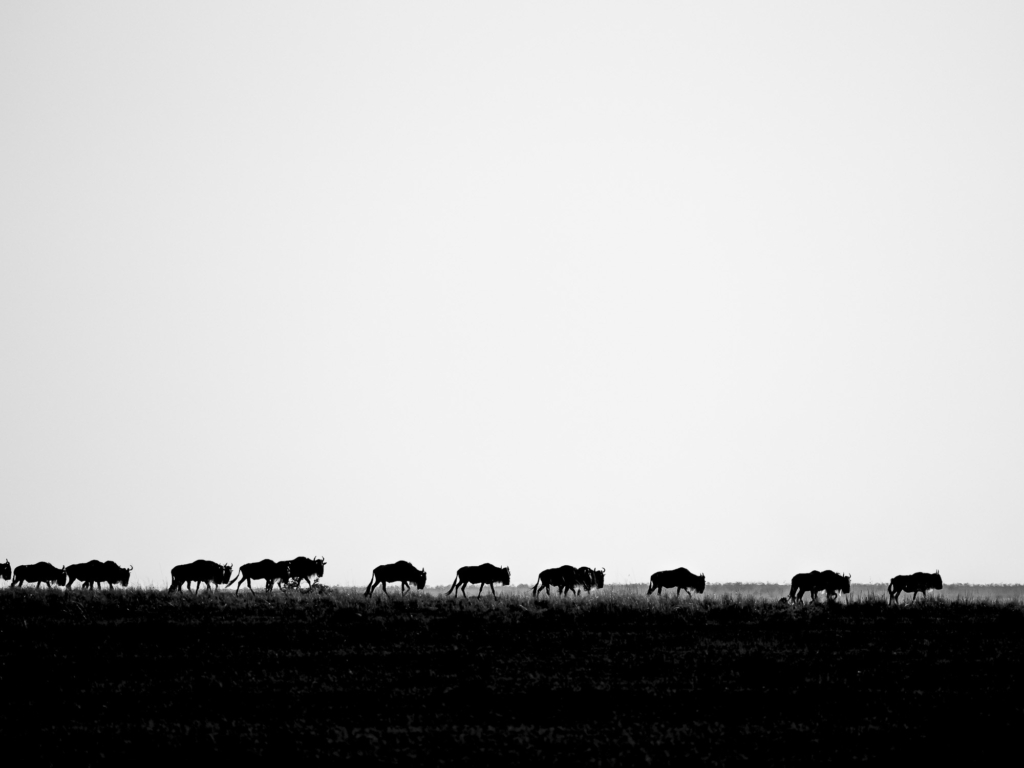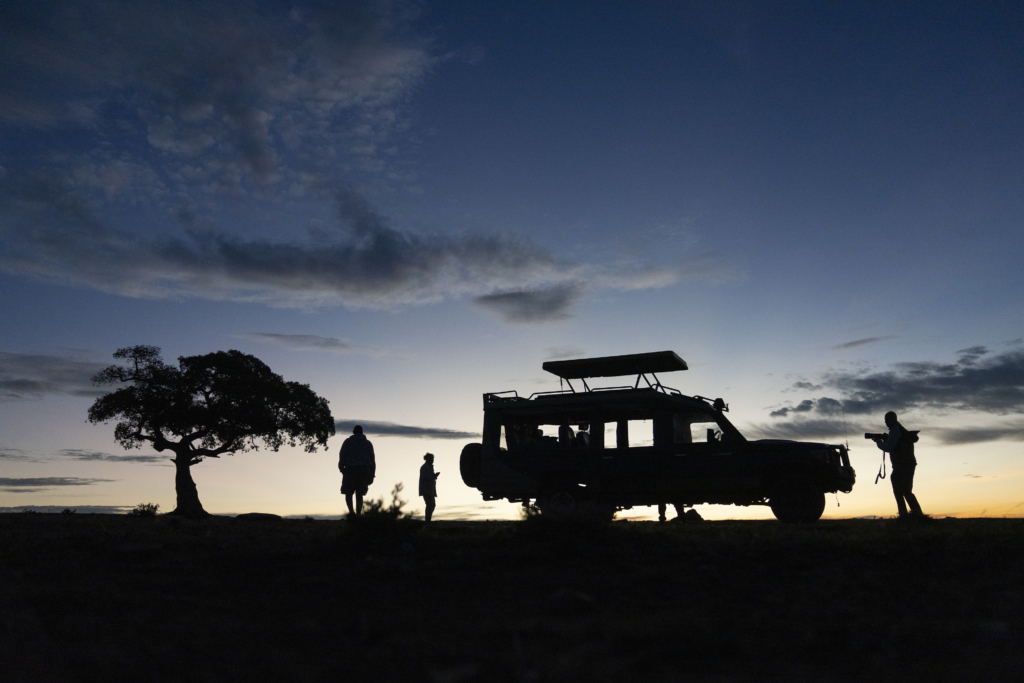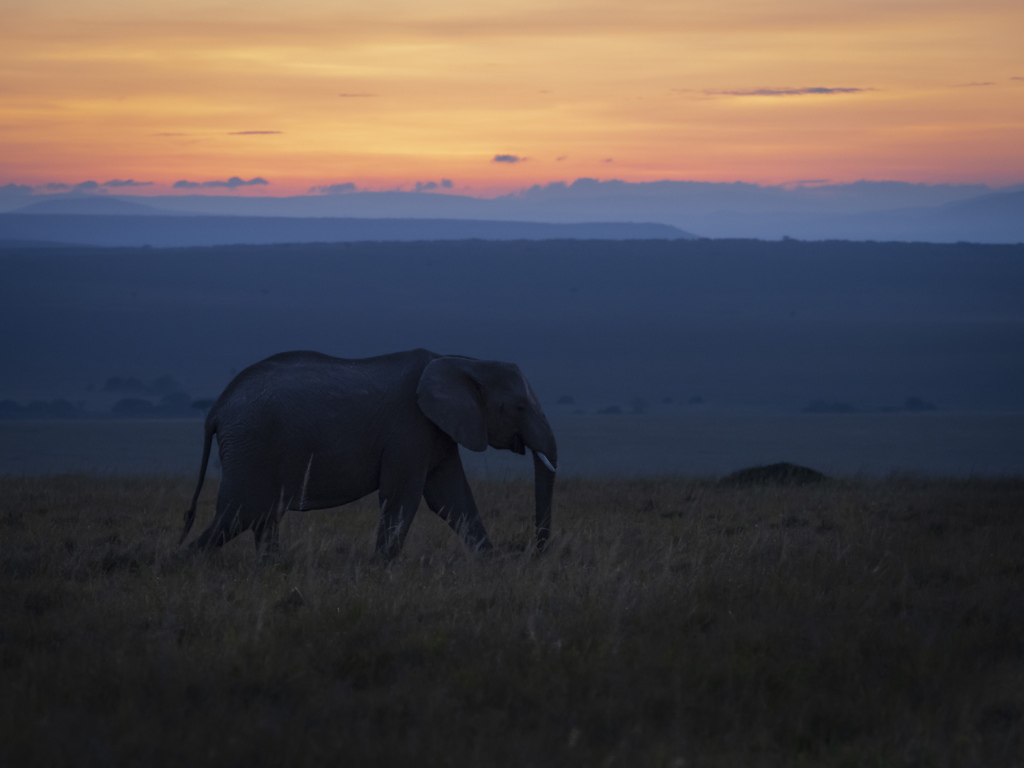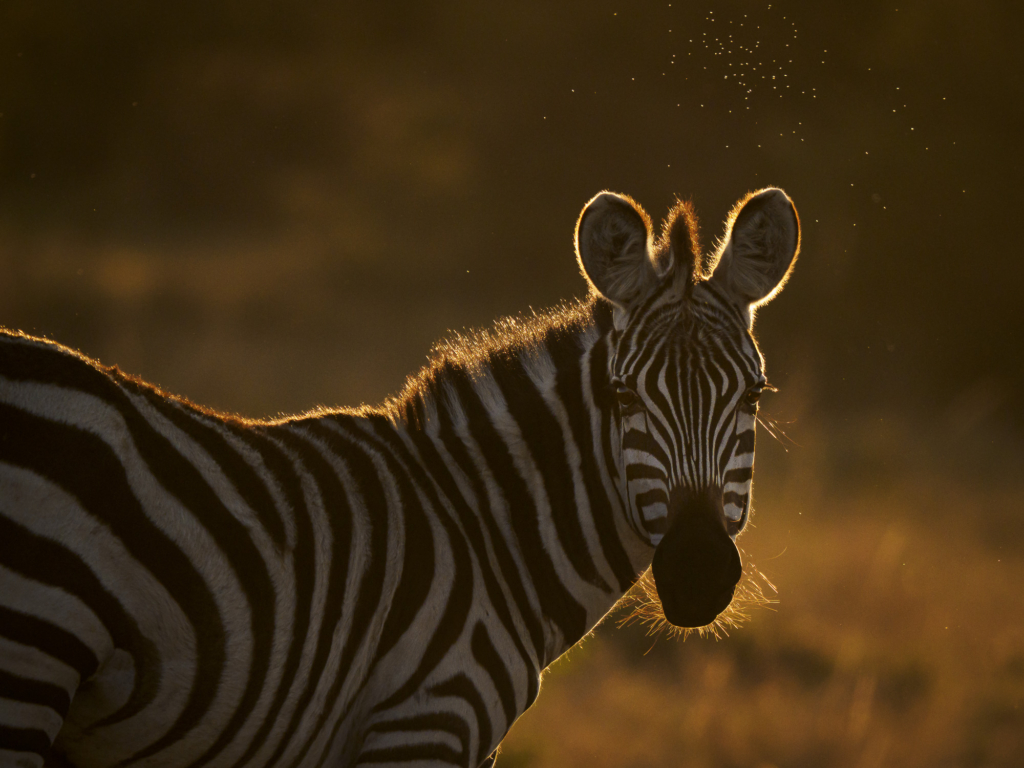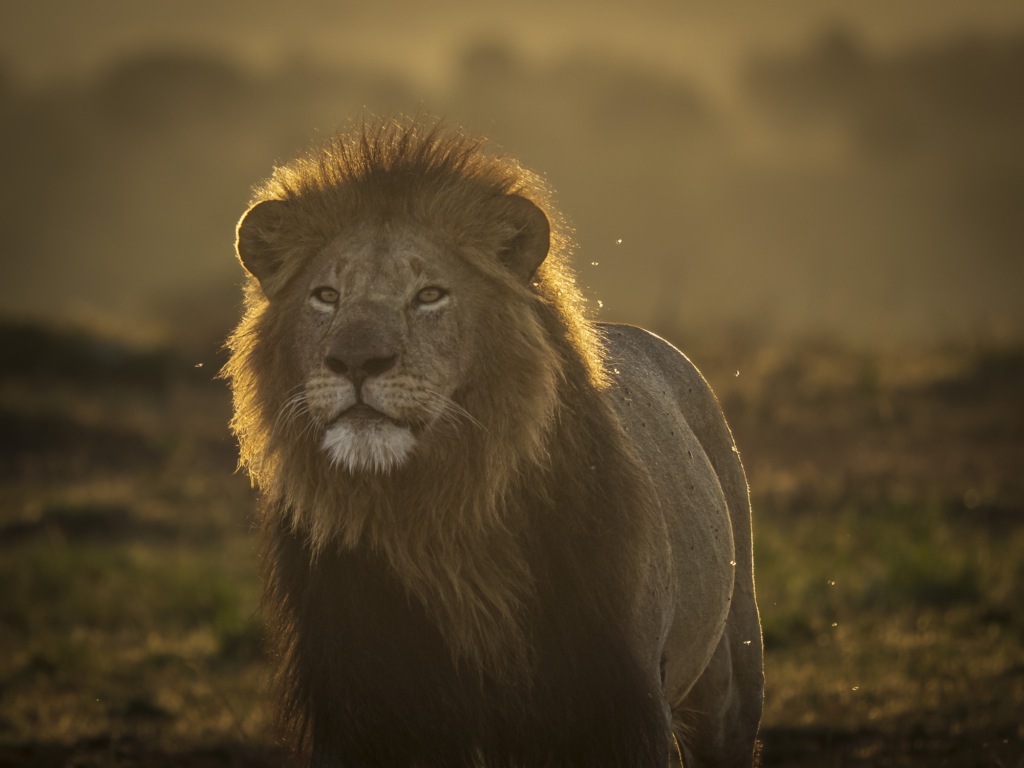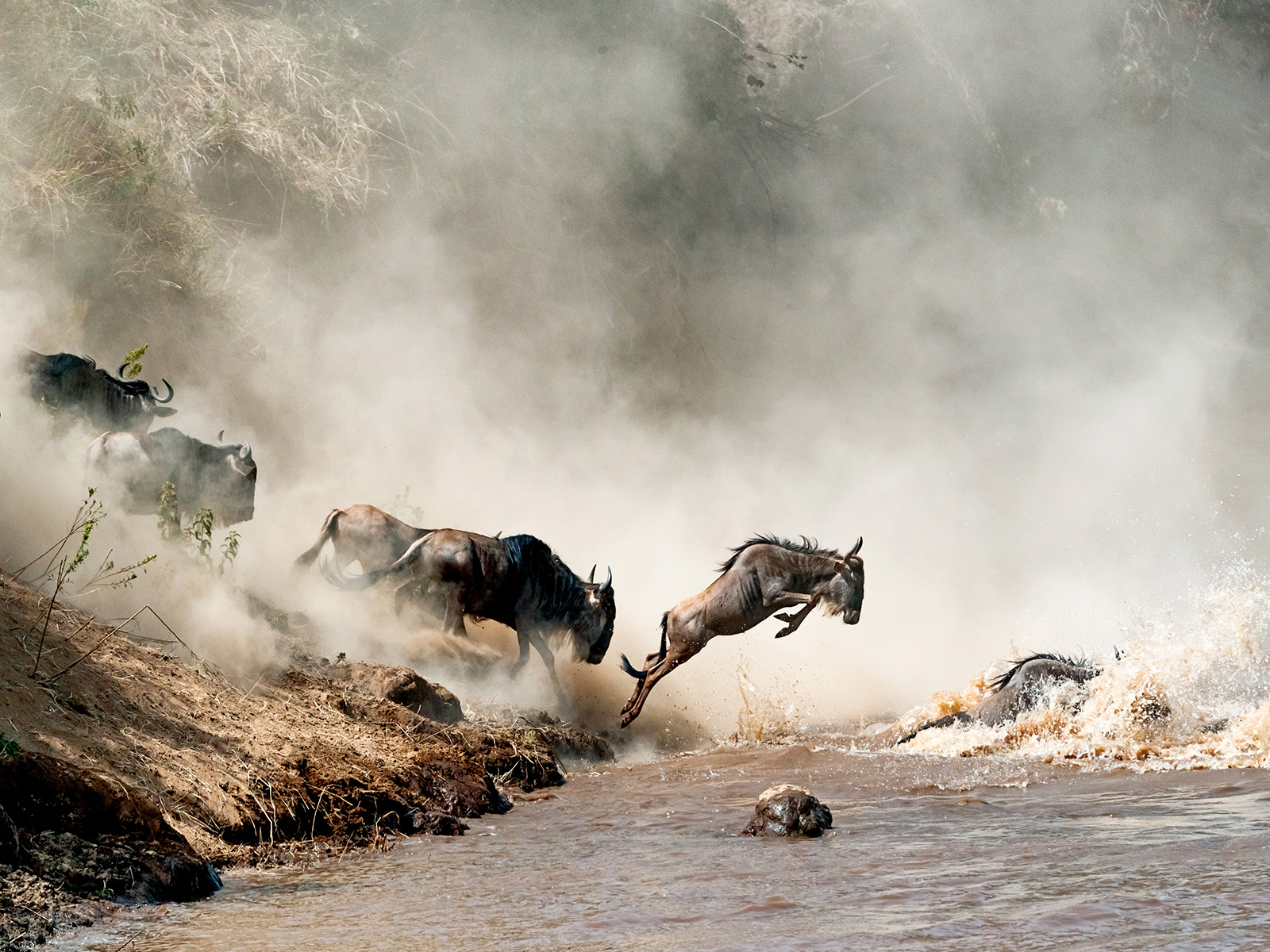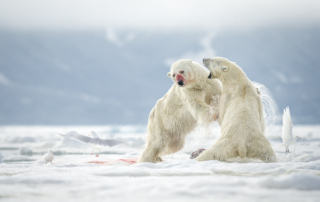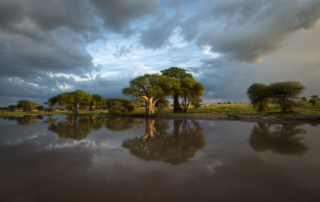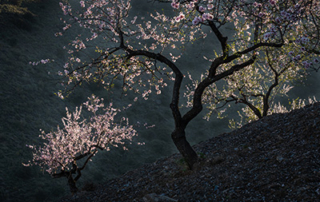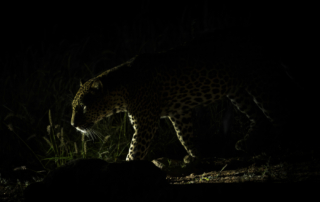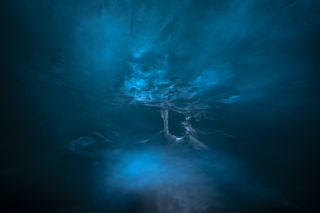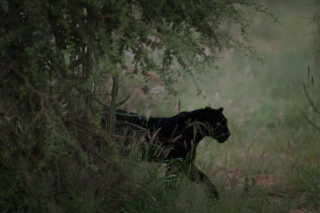Extend your tour with Elephants at the foot of Kilimanjaro, Amboseli NP, Kenya 2nd – 6th August 2026. Read more here…

The darkness of the warm African night embraces us as we sit around the camp fire in our tented camp. We hear some hyenas laughing as they pass not far from our camp. The conversation around the camp fire again picks up again and there is much to talk about. The whole day has been spent out in the fantastic nature of the Masai Mara and we have so many experiences and impressions, not to mention the pictures, the pride of lions we photographed at sunrise, wildebeests crossing the river and the unique experience of seeing a female cheetah with her cubs sitting on a termite mound and looking out over the vast grasslands.
Suddenly the night is filled with the sound of two roaring lions, powerfully and confidently the two males tell their pride and other lions that this is their territory and that they are the kings around here.
MASAI MARA
The Masai Mara is located in southwestern Kenya and is one of the best areas in all of Africa for viewing and photographing African wildlife. Together with the Serengeti National Park in Tanzania, the Masai Mara forms one of the world’s most spectacular ecosystems with perhaps the largest concentration of animals in the entire world. The ever ongoing migration of wildebeest and other grazing animals such as zebras and antelopes usually comes to the Masai Mara during the month of July and then the savanna is filled with millions of animals. To get to the grasslands of the Masai Mara, the animals have to cross the areas rivers and this phenomenon has become one of the truly great nature experiences in the world and something that as a nature photographer and nature enthusiast you just have to experience at some point in your life. When the animals cross the river to get to new pastures, they expose themselves to great danger as the river is “full” of crocodiles who are happy to take advantage of this opportunity. To reduce the risk of becoming a crocodile’s prey, the animals gather in large herds and the hesitation can be long before venturing into the river. Finally, someone ventures out and is immediately followed by the herd. In order to get across the river as quickly as possible, the animals sometimes throw themselves out of the bank and land on their relatives.
The base for our stay in Masai Mara is Oltepesi Tented Safari Camp. Our drivers guide us through the nature they grew up in and know inside and out. Their knowledge and experience is second to none in the Masai Mara and a guarantor of providing us with absolutely world-class photo opportunities on our safari. Our guides are fully aware of which lighting conditions are particularly attractive for nature photography and they have an outstanding ability to put us in the right position to find the subjects we are looking for. This tour is completely focused on giving the participants maximum time with the best photo conditions. During the tour we will spend a full 75 hours on safari. This means that the chances of getting fantastic pictures of the savannahs animals are very good.
A DAY ON SAFARI AT OLTEPESI TENTED SAFARI CAMP
The day starts at five o’clock with us meeting up for a cup of coffee or tea and a biscuit before we meet up with our guides and drivers at the safari vehicles. As we set off in the dark, for a full day in the Masai Mara, we can already sense the beginning of dawn in the east. Perhaps we will get a glimpse of any of the nocturnal animals that are in the area, such as bat-eared fox or porcupine. Just ten minutes later, will the sky in east take on some beautiful red tones. We will look for giraffes, antelopes, elephants or perhaps a lion that can make an intresting foreground in our image. We get the first photo opportunities of the day when we work with the animals’ characteristic silhouettes against the backdrop of the red sky, what a beautiful start to the day. As quickly as it came, the magical light is gone. The sun rises and we continue to look for animals in the early morning. With dew on the grass and maybe a little veil of fog in the valleys, we can get fantastic light conditions for photos during the first hours of the day. Sometimes we can find a group of lions or a cheetah in the earlier hours of the morning. At this time of the day, there are attractive photo oppertunities in all directions and our drivers do their utmost to ensure that we find pleasing compositions for the animals and birds of the savannah. All the time we keep an eye on the movement of the wildebeest herds by the rivers, if they start to gather to cross the river we quickly get in as good a position as we can.
When the best light for photography has passed and the animals’ activities permit, will we look for a nice place for breakfast, perhaps by a river bend or under an acacia tree. Often, the time around meals offers the opportunity for a little more free photography of landscapes, birds, lizards or insects as long as we don’t wander off from our spot.
After breakfast, we pack up and continue the safari. At this time of day, there are often information around from other guides and drivers about interesting things in the area. If the large herds of wildebeest and zebra begin to gather at the rivers, we will get information about that and go there as quick as we can. As the light gets sharper in the middle of the day, we try out a few different photo techniques that are suitable for the type of light when the sun is very high in the sky. Sometime in the middle of the day we make a lunch stop. We will once again have the opportunity to explore the immediate surroundings. In connection with the lunch break, we can also have a little rest. But soon we are off to find new photo oppertunities again. Sometime after 3 p.m., the light starts to get a little softer again. We spend time looking for interesting behaviour among the animals on the savannah. Perhaps we can see some predator preparing for a hunt. Our very experienced guides know how to position ourselves to get good photo positions on such occasions.
During the late afternoon the sun gets lower and lower. A beautiful light often appears at sunset, and we will try to find animals that can form a beautiful silhouette against the setting sun. After sunset, we slowly head home. When we get back to our camp, it is completely dark. We get about an hour in our tents before it is time for dinner and an opportunity to summarize the day’s impressions. The day ends with us falling asleep in our tents, surrounded by the sounds of the savannah. Perhaps we hear the strange sound of a group of zebras, barking jackals or a group of hyenas howling in the distance.
PHOTOGRAPHIC LEARNING
During the tour will our photographic leader give you photographic training based on your prior knowledge and level. The guidance in the field is completely adapted to you and your needs. In addition to this, if time allows, we will also have theoretical sessions where we talk about different photo techniques that we will use during the tour. The photographic training is adapted to the knowledge of the group and the individual, but we will also see to what photographic opportunities may arise during the tour. During our days in the Masai Mara, we will focus on photographing the animals of the savannah and extra focus will we have on the wildebeest and zebra crossings across the rivers. Lions, leopards and cheetahs are very common in the areas we move through in the Masai Mara and of course we will spend a lot of time with the big cats and other exciting animals. We will work a lot with the “image” and try to create as broad a portfolio from the Masai Mara as possible. At sunrise and sunset we look for opportunities to photograph the Masai Mara wildlife against the colorful and often dramatic African sky. In addition, we will cover various techniques on how you can create movement in your images by e.g. to use panning as a method.
Itinerary
Day 1 27/7 (Lunch – Dinner)
Transport by bus from Nairobi to Aitong in the early morning where we are meet by our Masai guides for further transport to our tent camp. After arriving at our tent camp, will we get lunch and then get ready for our first game drive. Back in the tent camp after dark.
Day 2–6 28/7 – 1/8 (Breakfast – Lunch – Dinner)
During the days in Masai Mara will we do a full-day game drives (breakfast and lunch are eaten in the park). We travel in customised Toyota Landcruisers in the Masai Mara and are constantly looking for images. We have permits to drive off-road to increase our photo opportunities.
Day 7 2/8 (Breakfast – Lunch)
Morning game drive in the same way as before. After lunch will we drive to Aitong for further transport by bus Nairobi. The tour ends at Jomo Kenyatta Airport in the evening.
Photographic leader
Frida Hermansson
Lives in Roslagen, Sweden. Frida has had a fascination and love for animals and nature since childhood. She also works as an AD and graphic designer and that has shaped her image creation.
In her photography, she is curious and constantly strives for new ways to portray her subjects, whether it is animals, landscapes or graphic details.
Frida has had several photo shows and exhibitions and also participated in SVT’s Mitt i Naturen, “The art of photographing nature”.
Frida’s pictures are published in Fotosidan Magasin, in articles and reports on Natursidan.se, the book “Experiences in Stockholm’s Nature”, and local press.
As a photographic guide on trips and workshops, Frida is passionate about sharing knowledge and inspiration, and the goal is always for the participants to come home with new knowledge, memorable experiences and really good pictures.
Website: www.fridahermansson.com
